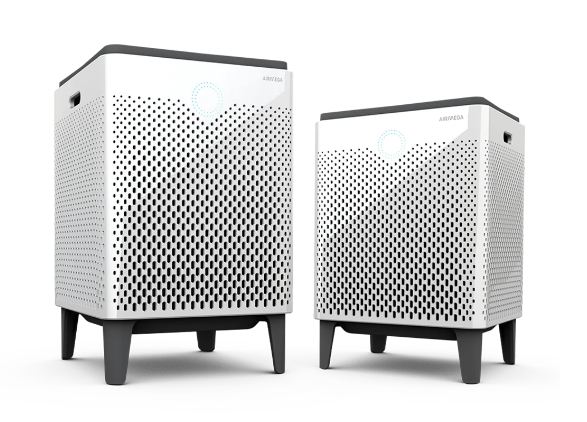
Air purifiers are devices that help to remove impurities from indoor air. Indoor air pollutants include airborne pollutants, dust, smoke, pet dander, pollen, fungi, VOCs, mold, mildew, and spores among others.
Research shows that indoor air contains five times more pollutants than outside air. This is because the air can circulate for days without being replaced. So, it is important to invest in a quality air purifier and keeping your living space ventilated for a healthy respiratory system.
If you are looking to purchase an air purifier for the first time, you might be wondering how they work. Also, you might be having doubts about whether they truly work. In this article, we are going to breakdown how air purifiers work. Read on…
How do air purifiers work?
There are different types of air purifiers and they employ different technologies for handling contaminated air. But one thing is common, air purifiers circulate the air before passing it through a filtration system.
Once the air is passed through the filtration system, pollutants and other contaminants are removed and you get back quality air. Note that some filtration systems are meant for a specific type of pollutants, some are better than others, but some can be harmful to your health.
In the next section, we discuss different types of air purifiers and how they work:
HEPA air purifiers
High-Efficiency Particulate Air (HEPA) is an air purification mechanism that uses filters with very fine mesh with the ability to trap up to 99.97% of particles (as small as 0.3 microns in diameter). These filters are known as HEPA filters.
They are effective in trapping pollen, dust, molds, pet dander, and other allergens. The best air purifiers in Canada have HEPA filters or True HEPA filters.
Using a fan, HEPA air purifiers draw air inside the device after which it passes through the filters where dust and other pollutants are trapped. Then, clean air is pumped back into the room and more polluted air is drawn in for purification.
This cycle continues and by the end of it, most of the air will have passed through the filters leaving fresh, allergen-free air in the room.
Pros
- HEPA filters are effective and they clean air without harmful by-products
- They can be combined with other filtration mechanisms for better air filtration
Cons
- They can be expensive to maintain because they require replacement after 6 to 12 months depending on usage.
- They are not as effective for very tiny air particles (less than 0.3 microns in diameter).
- Not as efficient as activated carbon filters when it comes to odor elimination.
Adsorbent air purifiers
Adsorbent air purifiers use carbon-activated filters with the ability to trap fumes, odors, and some chemicals in the air. Carbon-activated filters have materials called adsorbents that chemically or physically react with pollutants in the air causing them to bond and hence get trapped.
Activated carbon filters do not compact air particles hence they should be used in combination with other filters for efficiency. Also, they get saturated with air pollutants faster hence require frequent replacement every 3 to 6 months.
Activated carbon is also called activated charcoal.
Pros
- Capture odors, smoke, fumes, chemicals, and gases from your indoor air
- They do not release harmful products back into the air
Cons
- They are expensive to maintain
- They do not remove dust and allergens very well
UV air purifiers
UV air purifiers expose contaminated air to Ultraviolent (UV) light. Through the process of Ultraviolet Germicidal Irradiation (UVGI) the light breaks down the DNA composition of bacteria and pathogens in the air hence killing or making them inactive.
For effective results, the UV light should be very powerful and the contaminated air should be exposed longer. They are most effective when used in hospitals, labs, and other highly sterile environments.
For total air cleanup, UV filters should be used in combination with other filters.
Pros
- They kill germs and bacteria
- Help to prevent diseases
Cons
- Do not effectively remove dust, pollen, smoke, or odors from the air
Ionic air purifiers
Ionic air purifiers come in two types – ionizers and electrostatic precipitators.
Ionizers emit negative ions into the air, which combine with positive air pollutants. The ionized particles like dust, become too heavy to float in the air hence settling on surfaces in the room making it easy to wipe them.
Electrostatic precipitators use the same principle but the ionized particles get trapped on charged plates inside the purifier. To get rid of trapped air pollutants you will only clean the plates.
Pros
- Quiet operation
- They are easy to maintain because they do not use filters
Cons
- Produce ozone which is harmful to human health
- Ionizers can create a mess on your surfaces forcing you to clean the whole space
Ozone generators
As the name suggests, these devices produce ozone and they are not recommended for indoor use. The ozone component produced can react with other elements in the air resulting in a dangerous air composition.
Ozone air purifiers produce ozone which neutralizes air particles in a room. These devices should only be used for industrial purification and when no one is in the room, after which the room should be left fully ventilated for some time.
Ozone has been proven to trigger and worsen respiratory diseases, and, therefore, Ozone generators are not recommended for home use.
Pros
- Effective in disinfecting air and killing microbes in industrial capacity
Cons
- Not effective for home use because they produce ozone which is harmful to human health
Conclusion
From the information above, I believe you now understand how different air purifiers work. If you are still deciding on the best purifier for your home or office, you need to identify the main air pollutants in your surroundings. Only then can you choose the perfect air purifier.
For instance, if you want to buy an air purifier for your clinic, you should get one with UV filters because they are more effective for areas with germs and pathogens. Also, one which is made to deal with smoke is ideal for a home with one or two people who enjoy smoking.
